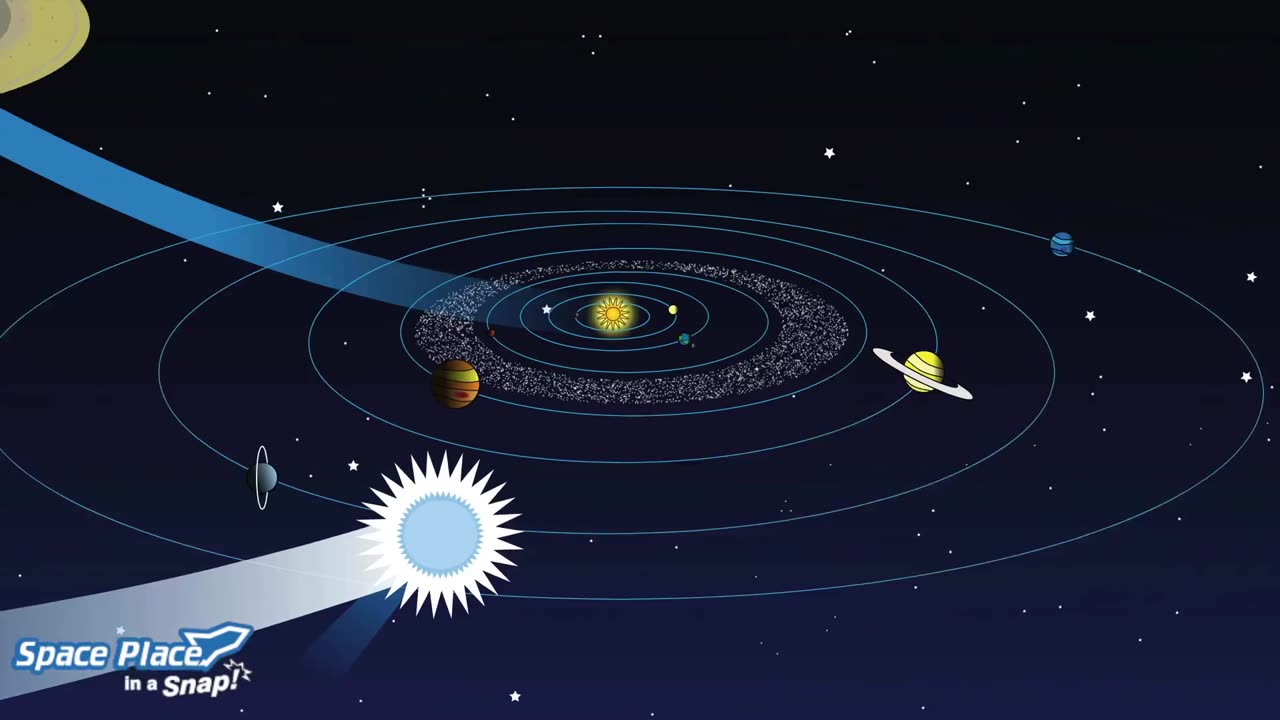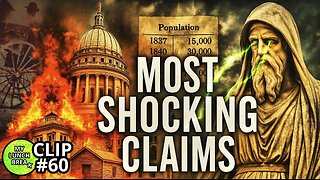Premium Only Content

How Did the Solar System Form?
The formation of our solar system is a complex process that scientists have studied and theorized about for many years. Here's a simplified description of how it is thought to have formed:
Solar Nebula: Approximately 4.6 billion years ago, our solar system began as a vast cloud of gas and dust in space known as a solar nebula. This nebula was composed mostly of hydrogen and helium, with trace amounts of other elements.
Gravitational Collapse: Some event, such as a nearby supernova explosion or sho
The formation of our solar system is a complex process that scientists have studied and theorized about for many years. Here's a simplified description of how it is thought to have formed:
Solar Nebula: Approximately 4.6 billion years ago, our solar system began as a vast cloud of gas and dust in space known as a solar nebula. This nebula was composed mostly of hydrogen and helium, with trace amounts of other elements.
Gravitational Collapse: Some event, such as a nearby supernova explosion or shockwave, triggered the gravitational collapse of the solar nebula. As the nebula contracted under the force of gravity, it began to spin and flatten into a rotating disk.
Protostar Formation: At the center of this spinning disk, a dense region formed, known as the protostar. This protostar grew hotter and more massive as it continued to attract material from the surrounding disk.
Planetesimal Formation: In the remaining part of the disk, smaller clumps of material, called planetesimals, began to form through a process of accretion. These planetesimals ranged in size from dust grains to larger bodies several kilometers in diameter.
Planet Formation: Over time, these planetesimals collided and merged, forming larger and larger bodies called protoplanets. These protoplanets continued to grow through collisions and gravitational attraction.
Clearing the Disk: As the protostar at the center of the disk grew into the Sun, it began to emit solar radiation. This radiation pressure cleared the remaining gas and dust from the disk, preventing further growth of planetesimals.
Formation of Planets: The protoplanets that survived this clearing process eventually became the planets we know today. Closest to the Sun, the terrestrial planets (Mercury, Venus, Earth, and Mars) formed from denser materials. Farther out, in the colder regions of the disk, the gas giants (Jupiter, Saturn, Uranus, and Neptune) formed from gas and ice.
Other Solar System Objects: In addition to planets, the solar system also contains other objects like asteroids, comets, and dwarf planets, which are remnants of the early solar nebula.
This process of solar system formation, known as the nebular hypothesis, is supported by various lines of evidence, including observations of other star-forming regions and the composition of celestial bodies within our solar system.
-
 1:52:46
1:52:46
Steven Crowder
4 hours agoCongress Drops New Epstein Files and Trump Drops New Bombs on Venezuela Terrorists
194K123 -
 1:10:39
1:10:39
The Rubin Report
2 hours agoCNN Host Actually Thought She'd Outsmarted Shapiro, Until He Asked This
35.7K30 -
 1:02:00
1:02:00
VINCE
4 hours agoThe Left's Demented Fantasies Shatter | Episode 117 - 09/03/25
166K97 -
 59:34
59:34
Nikko Ortiz
2 hours agoPainful Military Fails
15.8K -
 LIVE
LIVE
LFA TV
6 hours agoLFA TV ALL DAY STREAM - WEDNESDAY 9/3/25
4,171 watching -
 1:38:59
1:38:59
MYLUNCHBREAK CHANNEL PAGE
3 hours agoHistory’s Most SHOCKING Claims?
15.7K8 -
 1:36:43
1:36:43
Caleb Hammer
4 hours agoThe First LGBT Divorce On Financial Audit
15.4K -
 1:39:41
1:39:41
Badlands Media
2 hours agoBadlands Daily: September 3, 2025 (#2)
30.3K5 -
 LIVE
LIVE
Jim Jordan
3 hours agoEurope’s Threat to American Speech and Innovation
392 watching -
 1:04:57
1:04:57
The State of Freedom
7 hours ago $0.26 earnedFLF: #16 Delivering the Truth Comes at a Cost w/ Joe Hoft
9.23K